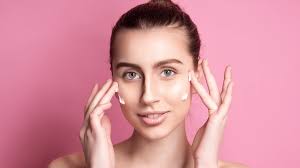
Can I Use Granactive Retinoid with Lactic Acid?
When it comes to skincare, there are a few ingredients that are essential for maintaining a healthy skin. Chemical exfoliants, such as lactic acid and retinol are undoubtably two of the most effective actives that deliver noticeably results. With such an array of ingredients and formulas, it can often feel overwhelming trying to establish how to layer these actives properly. Not to mention the importance of knowing which products can be used together, and which should be avoided completely.
This is something we will be exploring a little further in today’s blog post, focusing mainly on the popular powerhouses, lactic acid and granactive retinoid. So, let’s dive in and find out more, starting with exploring the benefits each ingredient can leave on the skin.
What is Granactive Retinol?
Granactive retinoid, also known as hydroxypinacolone retinoate, is a derivative of vitamin A and is one of the most researched retinoid ingredients. Compared to other derivatives, granactive retinol is known for providing an abundance of skin benefits with minimal side effects, some of which are a common association to retinol, such as redness, increased irritation, and peeling to the skin.
Skincare benefits of Granactive Retinoid
Granactive retinoid can stimulate the growth of skin cells resulting in a complexion that is glowing and healthy.
Granactive retinoid helps to thicken the skin ensuring it can protect itself more effectively from exposure to sun light.
Granactive retinoid increases the speed of the skin cell turnover resulting in fine lines and wrinkles becoming reduced and preventing further ones from developing.
Granactive retinoid works deeply in the skin and helps to clear out clogged pores of excess sebum, dirt, bacteria, and other impurities that can lead to blackheads, and other forms of breakouts.
Granactive retinoid helps to even out the skin tone making it appear brighter, vibrant, with signs of hyperpigmentation visibly improved.
Granactive retinoid can stimulate the production of collagen and elastin helping the skin become firmer, plumped, and smooth.
If you wanted to find out more, there are more detailed blog posts about other forms of retinoid over on the Skin School, so be sure to check that out.
What is Lactic Acid?
Lactic acid has a reputation of being the gentlest chemical exfoliant in the family of alpha hydroxy acids. Derived from soured milk and other dairy produce, it can deliver similar results as potent acids, such as glycolic acid, without the risk of skin irritation. Here are some examples of the benefits of lactic acid on the skin.
Skincare benefits of Lactic Acid
Lactic acid can slough away the layer of dead skin cells that can build-up over time resulting in breakouts, blemishes, and spots.
Lactic acid can help improve the skin making it become firmer and thicker.
Lactic acid can visibly reduce the appearance of fine lines and wrinkles helping the skin appear smoother.
Lactic acid is also able to work as a humectant, meaning it can pull moisture into the skin surface and lock it into place, helping to keep the lipid barrier hydrated and healthy.
Lactic acid can come in a variety of percentage strengths, from 5% to over 12% giving you the chance to gain optimal results you are wanting to achieve.
Lactic acid has a larger molecule size meaning it is unable to penetrate too far into the skin avoiding unwanted irritation.
Lactic acid is suitable for all skin types to use with the peace of mind it will deliver results without any concerns in causing redness, dryness, or irritation.
If you wanted to know more about lactic acid, check out our dedicated blog post.
Can I use retinol and lactic acid?
Yes, you can, but there are some things you need to remember to ensure you reap the rewards of each of these ingredients, without suffering from any negative side effects.
It is considered that the most effective way you can use both lactic acid and retinol together is to apply each ingredient during different times of the day.
Applying lactic acid during your morning routine will rid the skin of any residue or build-up of skincare products. It will also prepare the skin for the following steps of your routine, helping other formulas to absorb rapidly. You can then follow this in the evening with your retinol, allowing it to work undisturbed from free radicals, such as pollution and UV rays, whilst you catch up on your beauty sleep.
It is important to use retinol in the evening as any exposure to sunlight will render any form of retinoid completely useless and unable to deliver results. You will also find that the skin can have an increased sensitivity to sunlight so using a daily sunscreen with factor 30 and above is essential to protect from sun damage.
Once your skin has built its tolerance to both ingredients, you will find your routine has a significant improvement on the complexion and general health of the skin and its lipid barrier. Not all skin is the same, and if you are finding the application mentioned above is too much for your skin, instead try applying them every other day. If you ever have any concerns (especially if you’re introducing these ingredients to your skin for the first time) consult with a dermatologist or trained professional to ensure you find the best product for you and your skin’s needs.
Can you use AHA with granactive retinoid?
Yes, you certainly can, just be mindful about application to enhance the benefits to the skin. what I mean by this is, although granactive retinoid is praised for its non-irritating approach, it shouldn’t be layered with acids. This is mainly due to the pH levels of the formulations being more acidic, which when applied the face can cause a temporary disruption to the acidic pH on the skin. With too much acidity there is an increased risk of irritation, redness, severe dryness, and general discomfort.
To avoid any of this, the most effective way of applying AHA and granactive retinoid is to either use the AHA in the morning and retinoid in the evening. Or using both in the evening, allowing enough time for the skin to rebalance and prepare for the next steps of your skincare routine.
It may take some time and patience, but with the right application and in the correct order, the results you see are highly impressive. Don’t forget, if you have any further questions about layering skincare ingredients, or other skin related questions, come and follow us on Instagram for more.


